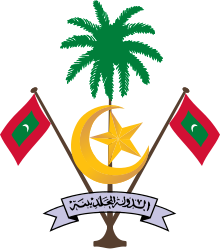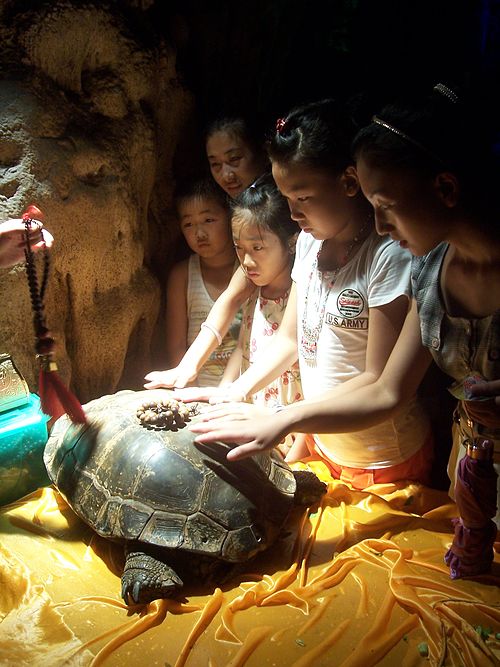Portal:Asia

 Asia (/ˈeɪʒə/ ⓘ AY-zhə, UK also /ˈeɪʃə/ AY-shə) is the largest continent in the world by both land area and population. It covers an area of more than 44 million square kilometers, about 30% of Earth's total land area and 8% of Earth's total surface area. The continent, which has long been home to the majority of the human population, was the site of many of the first civilizations. Its 4.7 billion people constitute roughly 60% of the world's population. Asia shares the landmass of Eurasia with Europe, and of Afro-Eurasia with both Europe and Africa. In general terms, it is bounded on the east by the Pacific Ocean, on the south by the Indian Ocean, and on the north by the Arctic Ocean. The border of Asia with Europe is a historical and cultural construct, as there is no clear physical and geographical separation between them. It is somewhat arbitrary and has moved since its first conception in classical antiquity. The division of Eurasia into two continents reflects East–West cultural, linguistic, and ethnic differences, some of which vary on a spectrum rather than with a sharp dividing line. A commonly accepted division places Asia to the east of the Suez Canal separating it from Africa; and to the east of the Turkish Straits, the Ural Mountains and Ural River, and to the south of the Caucasus Mountains and the Caspian and Black seas, separating it from Europe. China and India traded places as the largest economies in the world from 1 to 1800 CE. China was a major economic power for much of recorded history, with the highest GDP per capita until 1500. The Silk Road became the main east–west trading route in the Asian hinterlands while the Straits of Malacca stood as a major sea route. Asia has exhibited economic dynamism as well as robust population growth during the 20th century, but overall population growth has since fallen. Asia was the birthplace of most of the world's mainstream religions including Hinduism, Zoroastrianism, Judaism, Jainism, Buddhism, Confucianism, Taoism, Christianity, Islam, Sikhism, as well as many other religions. (Full article...) Featured article The Anbar campaign consisted of fighting between the United States military, together with Iraqi security forces, and Sunni insurgents in the western Iraqi governorate of Al Anbar. The Iraq War lasted from 2003 to 2011, but the majority of the fighting and counterinsurgency campaign in Anbar took place between April 2004 and September 2007. Although the fighting initially featured heavy urban warfare primarily between insurgents and U.S. Marines, insurgents in later years focused on ambushing the American and Iraqi security forces with improvised explosive devices (IEDs), large scale attacks on combat outposts, and car bombings. Almost 9,000 Iraqis and 1,335 Americans were killed in the campaign, many in the Euphrates River Valley and the Sunni Triangle around the cities of Fallujah and Ramadi. Al Anbar, the only Sunni-dominated province in Iraq, saw little fighting in the initial invasion. Following the fall of Baghdad it was occupied by the U.S. Army's 82nd Airborne Division. Violence began on 28 April 2003 when 17 Iraqis were killed in Fallujah by U.S. soldiers during an anti-American demonstration. In early 2004 the U.S. Army relinquished command of the governorate to the Marines. By April 2004 the governorate was in full-scale revolt. Savage fighting occurred in both Fallujah and Ramadi by the end of 2004, including the Second Battle of Fallujah. Violence escalated throughout 2005 and 2006 as the two sides struggled to secure the Western Euphrates River Valley. During this time, Al Qaeda in Iraq (AQI) became the governorate's main Sunni insurgent group and turned the provincial capital of Ramadi into its stronghold. The Marine Corps issued an intelligence report in late 2006 declaring that the governorate would be lost without a significant additional commitment of troops. (Full article...)Selected Country The Maldives, officially the Republic of Maldives, and historically known as Maldive Islands, is a country and archipelagic state in South Asia in the Indian Ocean. The Maldives is named after the main island and capital, Malé. The Maldives is southwest of Sri Lanka and India, about 750 kilometres (470 miles; 400 nautical miles) from the Asian continent's mainland. The Maldives' chain of 26 atolls stretches across the equator from Ihavandhippolhu Atoll in the north to Addu Atoll in the south. The Maldives is the smallest country in Asia. Including the sea, the territory spans roughly 90,000 square kilometres (35,000 sq mi), and a land area of 298 square kilometres (115 sq mi). The Maldives is one of the world's most geographically dispersed sovereign states, and the smallest Muslim-majority country by land area. With a population of 515,132 in the 2022 census, it is the 2nd least populous country in Asia and the ninth-smallest country in the world by area. Malé is the capital and the most populated city, traditionally called the "King's Island", where the ancient royal dynasties ruled from its central location. The Maldivian Archipelago is located on the Chagos–Laccadive Ridge, a vast submarine mountain range in the Indian Ocean; this also forms a terrestrial ecoregion with the Chagos Archipelago and Lakshadweep. The Maldives has an average ground-level elevation of 1.5 metres (4 ft 11 in) above sea level, and a highest natural point of only 2.4 metres (7 ft 10 in), making it the world's lowest-lying country. Some sources state the highest point, Mount Villingili, as 5.1 metres or 17 feet. (Full article...)Featured biographyAlbertus Soegijapranata, SJ (Indonesian: [alˈbərtʊs suˈɡijapraˈnata]; Perfected Spelling: Albertus Sugiyapranata; 25 November 1896 – 22 July 1963), better known by his birth name Soegija, was a Jesuit priest who became the Apostolic Vicar of Semarang and later its archbishop. He was the first native Indonesian bishop and known for his pro-nationalistic stance, often expressed as "100% Catholic 100% Indonesian". Soegija was born in Surakarta, Dutch East Indies, to a Muslim courtier and his wife. The family moved to nearby Yogyakarta when Soegija was still young; there he began his education. Known as a bright child, around 1909 he was asked by Father Frans van Lith to enter Xaverius College, a Jesuit school in Muntilan, where Soegija slowly became interested in Catholicism. He was baptised on 24 December 1910. After graduating from Xaverius in 1915 and spending a year as a teacher there, Soegija spent two years at the on-site seminary before going to the Netherlands in 1919. He began his two-year novitiate with the Society of Jesus in September 1920 in Grave, and finished his juniorate there in 1923. After three years studying philosophy at Berchmann College in Oudenbosch, he was sent back to Muntilan as a teacher for a further two years. In 1928, he returned to the Netherlands to study theology at Maastricht, where he was ordained by Bishop of Roermond Laurentius Schrijnen on 15 August 1931; Soegija then added the word "pranata" to the back of his name. He was then sent back to the Indies to preach and became a parochial vicar at the parish in Kidul Loji, Yogyakarta, and in 1934 he was given his own parish in Bintaran. There he focused on creating a sense of Catholicism within the native community, emphasising the need for strong bonds between Catholic families. Soegijapranata was consecrated as the vicar apostolic of the newly established Apostolic Vicariate of Semarang in 1940. (Full article...)General imagesThe following are images from various Asia-related articles on Wikipedia. Featured picture Credit: Paul Munhoven In the grotto of the flute reeds, China, a family shows reverence for an ancient turtle. The turtle is a symbol of longevity throughout many parts of Asia. Its four feet represent the four corners of the earth, its endurance is considered to last 10,000 years. A symbol of good luck and long life, many turtles are pushed towards extinction by consumption in Chinese medicine.
Did you know...
Updated: 6:33, 14 February 2024 In the news
Related portalsMajor Religions in Asia Middle East Central Asia and Surroundings Indian Subcontinent Southeast Asia East Asia Selected panorama
The Hajj is an annual Islamic pilgrimage to Mecca, Saudi Arabia, the holiest city for Muslims, and a mandatory religious duty for Muslims that must be carried out at least once in their lifetime by all adult Muslims who are physically and financially capable of undertaking the journey, and can support their family during their absence. TopicsCategoriesAssociated WikimediaThe following Wikimedia Foundation sister projects provide more on this subject:
More portalsShortcuts to this page: Asia portal • P:ASIA Purge server cache |





























































































